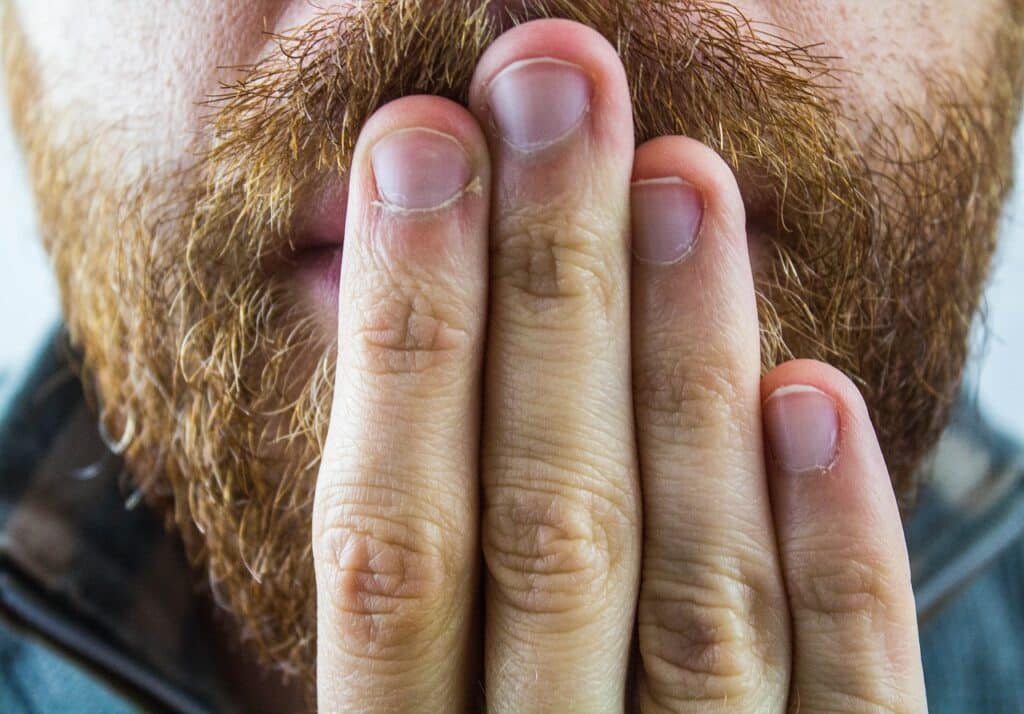Hiccups are a common, often harmless, but sometimes irritating reflex that most people experience at some point in their lives. They occur when the diaphragm, the muscle that aids in breathing, involuntarily contracts, causing a sudden closure of the vocal cords and producing the characteristic “hic” sound. While hiccups usually resolve on their own within a few minutes, they can occasionally persist and cause discomfort.
Understanding how to stop hiccups effectively can be invaluable, especially in social or professional settings where they can be particularly disruptive. This guide explores five of the most effective methods to stop hiccups, each grounded in either physiological or neurological principles. Whether you’re dealing with a brief bout or a more stubborn case, these strategies can help you regain control and put an end to those pesky hiccups quickly.
1. Controlled Breathing Techniques
Controlled breathing techniques are among the most effective methods for stopping hiccups, as they directly target the involuntary contractions of the diaphragm. These techniques work by regulating your breathing patterns, which can help disrupt the reflex causing hiccups and restore the diaphragm’s normal function.
One of the most common approaches is deep breathing with breath-holding. By taking a deep breath and holding it for 10-20 seconds before exhaling slowly, you increase the carbon dioxide levels in your blood. This rise in carbon dioxide can help relax the diaphragm and stop the hiccups.
Another effective technique is breathing into a paper bag. Holding a small paper bag around your mouth and nose and slowly inhaling and exhaling into it helps increase carbon dioxide levels similarly to breath-holding. This method also provides a physical distraction, helping to reset the diaphragm.
Pursed-lip breathing is another useful exercise. This involves inhaling slowly through the nose and then exhaling through pursed lips, as if you were blowing out a candle. The controlled exhalation helps slow the breathing process and calm the diaphragm.
Finally, diaphragmatic breathing, also known as belly breathing, focuses on deep breaths that cause the abdomen, rather than the chest, to rise and fall. This technique helps engage the diaphragm more fully and can quickly relieve hiccups.
These controlled breathing techniques are simple, effective, and can be practiced anywhere, offering quick relief from hiccups by calming the diaphragm and restoring normal breathing patterns.

2. Drinking Cold Water
Drinking cold water is a widely recognized and effective remedy for stopping hiccups. The sudden intake of cold water can help stimulate the vagus nerve, which runs from the brain to the stomach and plays a crucial role in controlling the diaphragm. By stimulating this nerve, you can interrupt the hiccup reflex and bring the diaphragm’s involuntary contractions back under control.
One of the simplest methods is to slowly sip a glass of cold water. The sensation of cold liquid moving down your throat can trigger the vagus nerve, helping to reset its signals and stop the hiccups. For some people, drinking the water quickly in one go might work better, as the sudden rush can be more effective in disrupting the hiccup cycle.
Another variation involves drinking cold water while bending over. By tilting your head forward as you drink, you alter the position of your diaphragm, which can further help interrupt the hiccup reflex. Similarly, drinking from the opposite side of the glass (by tilting the glass away from your face) also requires a shift in body posture, adding an extra layer of distraction that can assist in stopping hiccups.
In addition to stimulating the vagus nerve, cold water might also work by causing a brief shock to the system, which can jolt the diaphragm out of its spasm. Whether sipped slowly or gulped down quickly, drinking cold water is a convenient and effective way to stop hiccups, often providing immediate relief.
3. Swallowing Sugar
Swallowing a spoonful of sugar is a classic and time-tested remedy for stopping hiccups. This simple technique works by stimulating the vagus nerve, which helps control the diaphragm. The granules of sugar create a slight irritation at the back of the throat, which can distract the body from the hiccup reflex and reset the diaphragm’s rhythm.
When you place a spoonful of granulated sugar on your tongue and swallow it without chewing, the sugar stimulates sensory nerves in your mouth and throat. This stimulation sends signals through the vagus nerve to the brain, potentially interrupting the cycle of hiccups. The act of swallowing itself also plays a role in engaging and calming the diaphragm.
This method is particularly effective because it combines two elements: the mechanical action of swallowing and the sensory distraction caused by the sugar’s texture. The granules take a moment to dissolve, which gives the nerve just enough time to respond and potentially stop the hiccups.
The sugar method is not only effective but also convenient, as sugar is readily available in most homes. Additionally, this remedy is safe and can be used by people of all ages, making it a popular choice for parents helping children with hiccups.
In summary, swallowing a spoonful of sugar works by engaging the vagus nerve and the swallowing reflex, helping to reset the diaphragm and stop hiccups. This simple, accessible remedy often provides quick and effective relief from hiccups.
4. Applying Pressure to the Diaphragm
Applying pressure to the diaphragm is an effective method to stop hiccups by physically calming the muscle responsible for the involuntary contractions. The diaphragm, a large muscle located below the lungs, plays a key role in breathing. When it spasms uncontrollably, it causes the “hic” sound characteristic of hiccups. By applying gentle pressure to this area, you can help relax the diaphragm and interrupt the hiccup reflex.
One common technique is to press down gently on your diaphragm, located just below the ribcage. You can do this by placing your hands or fingers on the area and applying steady, gentle pressure for a few seconds. This can help to soothe the muscle and stop the spasms causing hiccups.
Another effective approach involves pulling your knees up to your chest while seated or lying down. By hugging your knees tightly to your chest and leaning forward slightly, you apply pressure to the diaphragm, helping it return to its normal rhythm. This position also compresses the abdomen, which can further help calm the diaphragm.
Some people find that leaning over a stable surface, such as a table, and pressing their chest against it also provides relief. This action similarly compresses the diaphragm, helping to alleviate hiccups.
In essence, applying pressure to the diaphragm works by calming the muscle and restoring normal breathing patterns. These techniques are easy to perform and can provide quick relief, making them useful for stopping hiccups in various situations.

5. Stimulating the Vagus Nerve
Stimulating the vagus nerve is a highly effective method for stopping hiccups because this nerve plays a crucial role in controlling the diaphragm. The vagus nerve runs from the brain to the abdomen, influencing various bodily functions, including heart rate, digestion, and the diaphragm’s movement. By stimulating this nerve, you can interrupt the hiccup reflex and bring the diaphragm back to its regular rhythm.
Several simple techniques can stimulate the vagus nerve. One of the most popular methods is gargling with cold water. The action of gargling creates a strong stimulation of the throat muscles, which sends signals through the vagus nerve to the brain. This stimulation can help reset the nerve’s signals to the diaphragm, stopping the hiccups.
Another effective technique is swallowing a spoonful of honey or sucking on a lemon wedge. Both of these actions create a strong sensory experience in the mouth and throat, which can engage the vagus nerve. The sourness of the lemon or the sweetness and texture of the honey triggers the nerve, helping to disrupt the hiccup cycle.
Holding your breath while performing these activities can enhance their effectiveness. By combining the breath-holding technique with vagus nerve stimulation, you increase carbon dioxide levels in the blood, which can further relax the diaphragm.
Overall, stimulating the vagus nerve offers a practical and effective approach to stopping hiccups. These methods are simple, can be done almost anywhere, and often provide quick relief by calming the diaphragm through direct nerve engagement.
How to Stop Hiccups: Final Thoughts
Hiccups, though usually harmless, can be an inconvenient and disruptive reflex. By understanding the underlying causes and employing effective techniques, it is possible to stop them quickly and regain comfort. Whether through controlled breathing, cold water, swallowing sugar, applying pressure to the diaphragm, or stimulating the vagus nerve, each method offers a practical solution that can be applied in various situations.
Knowing how to stop hiccups can help you avoid prolonged discomfort and ensure that a simple bout of hiccups doesn’t interfere with your daily activities. The next time you experience hiccups, try one of these methods and take control of the situation with confidence.


















